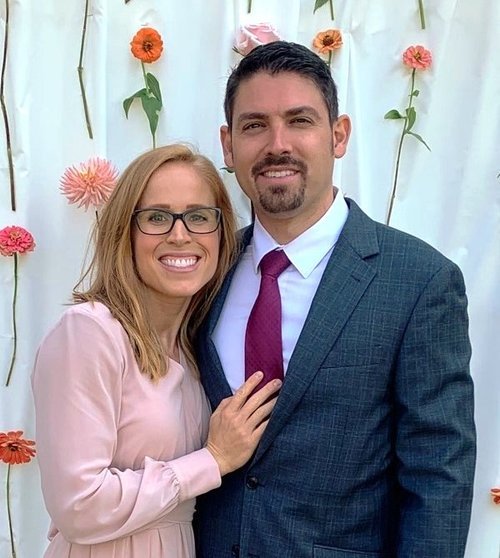The Trials Before Herod and Pilate
In these combined scenes, Jesus is brought by the Pharisees before Pilate first, then Herod, then back to Pilate. Neither ruler can find fault in Him, but they both let beatings and mockery happen to an innocent Man. He is silent with Herod and makes no attempt to defend Himself. He is very sparse with His answers to Pilate’s questions. Pilate asks if He is the King of the Jews, and in the brief exchange we find that Pilate is secular man who doesn’t believe it is possible to know the truth of the unseen world. The Pharisees accuse Jesus of violating their law and call for His death. Pilate marvels at Jesus’ composure, he marvels that Jesus makes no boisterous attempt to refute these accusations. Pilate states that Jesus is innocent and then attempts to appease the people by offering to release Jesus, the law-abiding citizen, or Barrabas, the murderer, thief, and insurrectionist. The Pharisees convince the people to ask for Barrabas and call for the execution of the innocent One.
Since the religious authorities do not have the power to put people to death, will not the faithful Adventists be brought before the civil courts? And would they not first be tried at the provincial/state level, the jurisdictions in which they live (that’s Herod)? Would not the importance of these accusations then move the investigations and trials to the federal level, the capital cities of the nations (that’s Pilate in Jerusalem)? Do you not think that by the refining influence of Jesus in the life, these secular authorities will marvel at the composure and peace of these people in the midst of such a storm? And even though attempts are made to appease the angry religious authorities, will not popular opinion create social pressure to call for the distinct and gross perversion of justice?
In summary, this part of the scene depicts the religious authorities, unable to execute these faithful ones without the approval of the civil branch, bringing them before judges, asking for their death. Both at the provincial/state level, as well as the Supreme Courts of the lands, no fault is found in this group. Their composure in the face of such furious opposition is the Testimony of Jesus. The religious authorities, now having so much political and social sway over the general populace, will encourage the people to pressure their governments into perverting justice and punishing law-abiding citizens.
Pilate then tries to appease the people by allowing the soldiers to put the crown of thorns on Jesus, to beat and mock Him. This doesn’t work. “We have a law, and by our law He ought to die, because He made Himself the Son of God.” They continue to call for the crucifixion of Jesus. Pilate’s wife sends him a letter telling him to have nothing to do with this. He sees the injustice of what is being done. He knows that this Individual before him is innocent, and he seeks to release Jesus.
Will not the unjustly accused ones face imprisonment, slavery, and exile? Will they not be mocked by all channels of the news media? Will their voices not be censored by Big Tech? And will not the religious authorities call for the death of these innocents because they have violated their manmade moral laws? And do you not think many of these secular civil judges and lawyers will remember learning about the Ten Commandments as kids or even in their own church attendance as adults and begin to think something is very wrong here? Do you not think the civil authorities will realize that these are innocent people being arraigned before the courts, and some will attempt to release them?
This part of the scene depicts the persecution of the faithful saints as events move rapidly toward a death decree. All the power of the media, all the power of Big Tech, all the social media influencers will be marshaled to heap distain on those that keep the commandments of God. The mass formation psychosis will be induced toward the faithful few that dare to defy men’s commandments. The civil authorities, having a cursory understanding from a religious past (Pilate’s wife, a woman representing a church), will begin to get that tingly feeling that something does not add up. They will no doubt study these things out, and some will discover the truth. All will acknowledge that these people are wrongly accused.
Now the pressure is increased. The Pharisees begin to claim that Pilate is not a friend of Caesar’s if he allows this Man, who makes Himself to be a King, to go unchecked. Suddenly, political affiliations and the risk of loss of power, position, and possibly life itself begin to dawn on Pilate. He argues for Jesus’ innocence. He asks, “Shall I crucify your king?” Then comes the point of full rejection of the Truth: “We have no king but Caesar” (John 19:15). Pilate washes his hands and claims his innocence of the blood of Jesus. The people respond, “His blood be on us and our children” (Matthew 27:25).
Will not the civil authorities be challenged on their allegiance to a certain ruler of Rome whose deadly wound is now healed, and whose political and religious power has once again become the basis for the legitimacy of leaders to govern? Will not the threat of tolerating heresy be the basis for applying both political and religious pressure to the leaders of our lands? And even though they argue on behalf of the innocent, will they not see that a national insurrection is brewing, and wash their hands of this innocent blood? “…it is expedient for us that one man should die for the people, and not that the whole nation should perish” (John 11:50). And when challenged as to the legitimacy of their manmade commandments, will not the religious authorities fully reject the truth, pledging full allegiance to Rome?
In this part of the scene, the civil authorities, who at this point are somehow tied up with Rome, will be threatened. They will bend. They will break. They will allow the death decree to be given against these innocent, faithful, pesky, heretical Adventists.
The Walk to Golgotha
The command for execution cannot be fulfilled immediately. Jesus is now given His cross to bear. Help is granted Him, and Simon is forced to carry it for Him. The women of Jerusalem weep as He passes, but Jesus tells them not to weep for Him. Instead, they must be aware of the coming destruction when Jerusalem is razed. They move on to the Place of the Skull.
Will there not be a command for execution? Will it not be set at a certain date and time, still future from the scenes of trial? Will not God be with the faithful ones, giving them strength to carry this cross to its endpoint? And as they await the passage of time until they are to be executed, do you not think there will be those who are still open to the truth and must be warned? Do you not think that these saints, these ones who have Christ in them, guiding them, will faithfully warn these precious souls for whom Christ died?
This scene portrays the delay between death decree and execution. It portrays the faithful followers of Christ still doing their duty as Christians to spread the truth to the last few who are still open to the leading of the Holy Spirit.
The Crucifixion
Jesus is crucified. The ridicule commences in a higher degree than before, and Jesus’ few earthly possessions are plundered. Darkness descends over the earth and Jesus, in the agony of body and anguish of spirit, cries out, “My God, My God, why have You forsaken Me?” The disciples, Pilate, the Pharisees, the common people, the Roman soldiers, everyone knows what is going on. No one in Jerusalem can claim ignorance from these events (recall the Road to Emmaus). Jesus says, “It is finished!” And then, with a loud cry, He gives up the ghost. The veil of the temple is torn, there is an earthquake, the rocks are rent, and the graves are opened, and the bodies of many of the saints are raised. And then Jesus enters into His Sabbath rest.
Will not the saints undergo ridicule of the highest order? Will they not have their remaining possessions seized or plundered? And as the darkness deepens to the blackest level, will they not in anguish cry out, “Why have You forsaken us?” Will not the whole world be focused on this crisis, this character-revealing event? Is there not a voice from the temple in Heaven saying, “It is finished!”? And then, just when it appears the saints will seal their testimony with their blood, will not the veil between this world and the unseen be rent in twain? Will not their Lord appear with a shout, will not the rocks rend, and the graves open, and dead in Christ rise first? And then, will not the saints enter into the eternal Sabbath rest?
In summary, this scene depicts the Time of Jacob’s Trouble. Intense agony of mind and soul is what the believers experience as they search for any secret, hidden sin that may separate them from God and cast contempt upon their Lord. The Bible promises that Jacob “is saved out of it.” This is a key difference. Jesus has died the first death and the second death for these saints. They, like Enoch and Elijah, pass on to the next life without experiencing death. And those saints who have died, like Moses, are raised to life eternal. All are invited into the eternal Sabbath rest, the rest from the labors of this world, the rest from the annoyance and temptations of the devil, the rest from the sin that so easily entangles.
Summary
Friends, when I look at these stories, I ask myself, “Which character will I be?” I’m pretty sure I won’t be a Judas. And I probably won’t be one of the nebulous, background disciples who flees when persecution arises. But a Peter? That’s a real possibility for me personally. Am I self-sufficient and asleep, aware of the approaching storm, but trusting to my own strength? Or will I, by the grace of God, be like Jesus, surrendered to the Father in all things and true to the right though the heavens fall?
Think on these themes. Study this for yourself. Ask yourself, am I ready? Will I have my lamp trimmed and burning when the crisis reveals my character? I encourage each of you to draw near to God TODAY, and He promises that He will draw near to you. “In all your ways acknowledge Him, and He shall direct your paths” (Proverbs 3:6).
****
Morse Stonecypher is an orthodontist living and working in British Columbia, Canada. He attended Southern Adventist University for undergraduate studies, then Loma Linda University for dentistry and orthodontics residency. He enjoys hiking, mountain biking, skiing, photography, writing short stories, reading history, giving Bible studies, and spending time with his wife and daughter.



